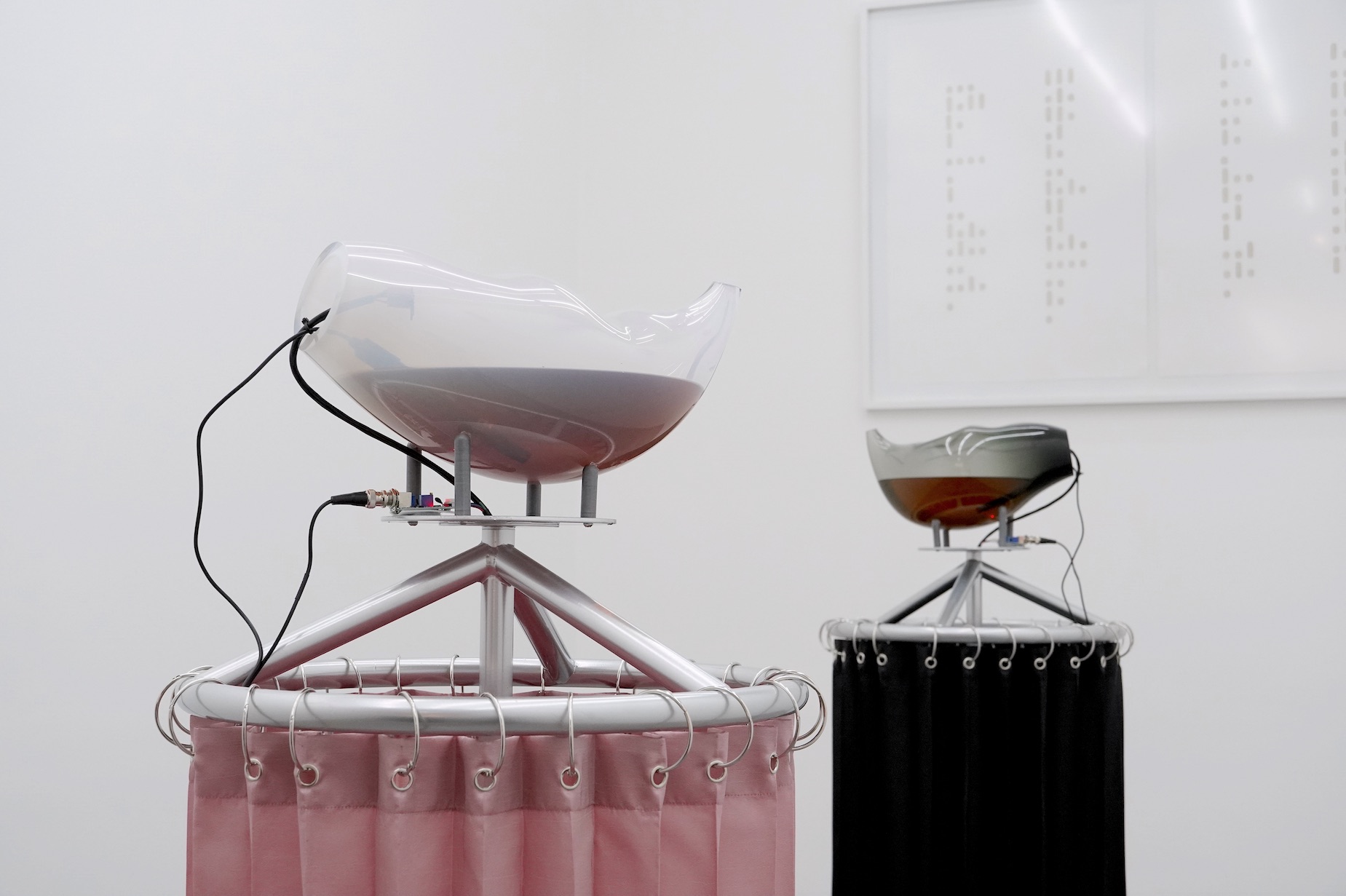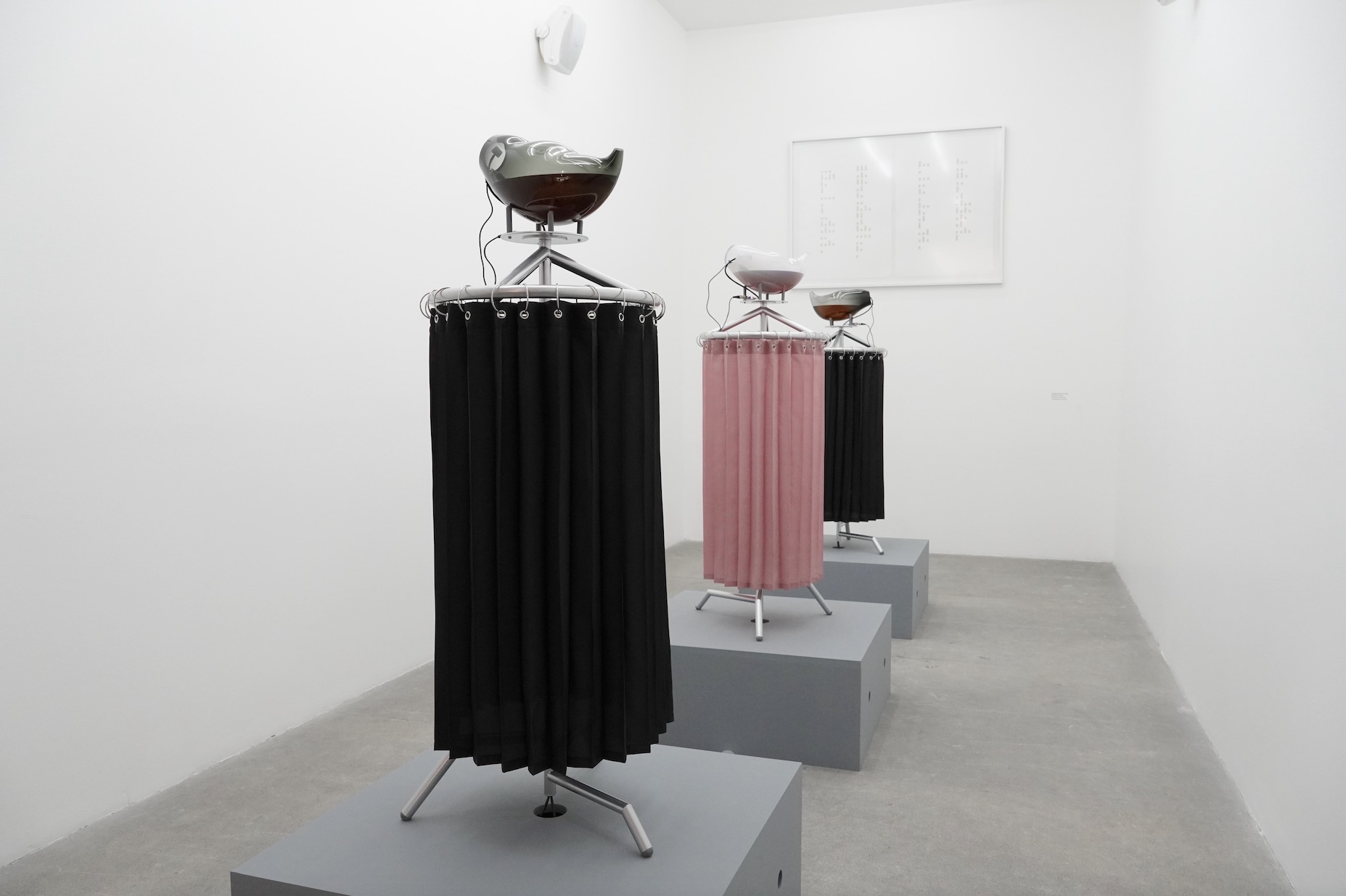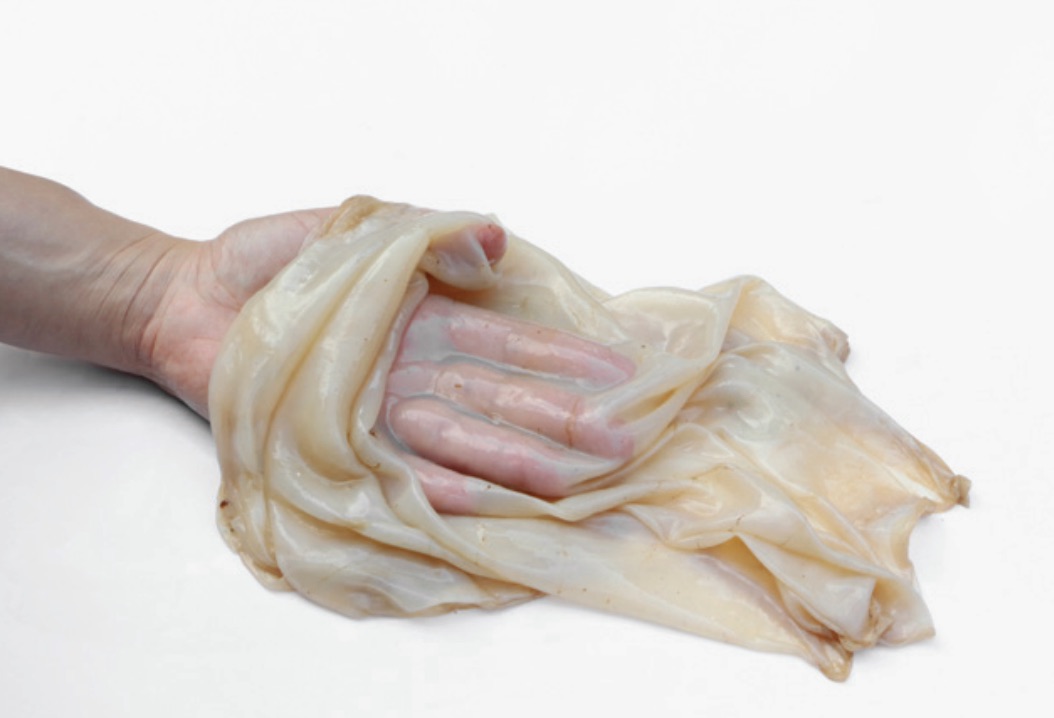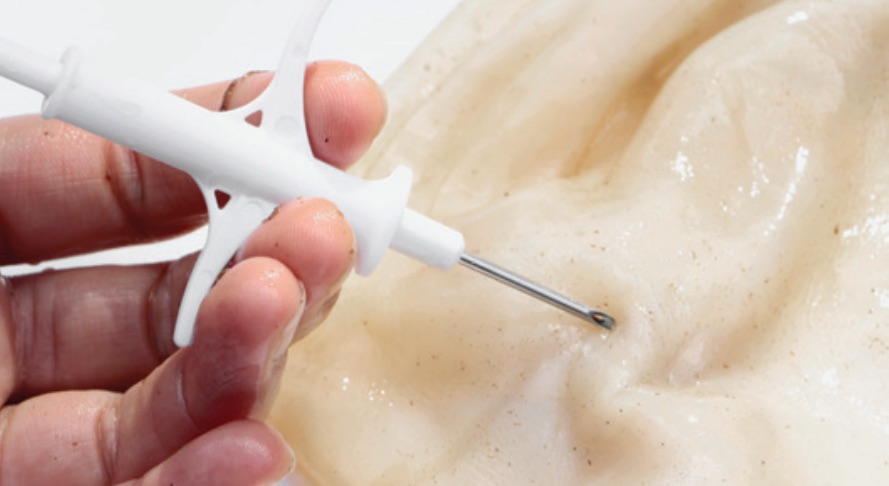
Essay
Embodied Technology. On Hybrida by Amor Muñoz
by Bárbara Foulkes
At MUAC
Reading time
4 min
As a child I would play at resting my ear on my mother’s stomach, listening to all the sounds that came from within. It was wonderful for me: rhythmic variations, bubble pops, dialogues in indecipherable codes. Could it be that my mother’s body was inhabited by characters from a science fiction movie? Perhaps something lived inside there that belonged to both of us? I had to rest my ear on several stomachs in order to make sure that we are all inhabited by sonic processes. The more still and silent you are, the more clearly you can hear what inhabits you. To be more specific: 39 billion bacteria live in our bodies, all necessary in order to keep us functioning and to produce vital energy. The bacteria are fundamental in the metabolic development that we carry out, asleep as well as awake, without pause.
Hybrida, the exhibition by Amor Muñoz currently living inside the MUAC, is a set of transparent glass stomachs inhabited by active bacterial colonies, perched on tripods that allude to the body’s architecture, dressed in fine pinched fabric. The ensemble offers a game between human legs and objects in a laboratory, between bodies dressed and naked. What could be more naked than an exposed organ?

This exhibition presents the organic as a constant relationship between various biological and technological forms. An interweaving between biology, technology, and informatics. A mixture of different materialities that, without modifying or canceling each other, creates a new entity.
Glass as a blurred boundary between the physical and the non-physical. Technology operating in the biological and vice versa. Cables that are veins or river flows inasmuch as they function as conductors. A resistance embodied in a colony of bacteria. Sonic amplifications that generate an encrypted message, perhaps a study of the way bacteria occur together within their colonies, or simple information flowing in a constant current.
Muñoz exhibits a laboratory and shares various aspects of her work and research. On a wall to the side of the biosculptures we can read a fragment of a book by Stephen Hawking in which he compares the functioning between genes and metabolism with a computer virus, arguing that both should be considered living things. I see my hands holding my cell phone and a couple of questions appear: “If my phone got a virus, would I feel sick? How is technology incarnated in our bodies and territories?”
Returning to my childhood memory, I wonder if expanding the notion of life is a matter of assuming ourselves to be interspecies entities. And, reflecting on Muñoz’s proposal, I wonder, “Could it be that we are already a mestizaje between biology and technology?” I quote Silvia Rivera Cusicanqui, describing different kinds of mestizaje in Bolivia, speaking of the Aymara idea—something that is and is not at the same time—also known as the logic of the excluded middle:
“This mestizo does not unify or eliminate contradictions by merging—in the tranquility of the one—but rather lives in the colonial contradiction. It is a hybrid as a result of a process of mestizaje.”*
This way of thinking connects me directly with Amor’s interdisciplinary research. In thinking of ourselves as hybrids, what doors would open up for us?
I dare to say that, for me, one of Hybrida’s most seductive proposals is to confuse and mix identities in order to think about them from the perspective of new relationships.
Translated to English by Byron Davies


Hybrida is on view at MUAC until September 5, 2021.
*Translated from “Silvia Rivera Cusicanqui y el mestizaje colonial andino,” Mtra. Diana Roselly Pérez Gerardo, Universidad Nacional Autónoma de México (UNAM). https://bdigital.uncu.edu.ar/objetos_digitales/6198/perezgerardoponmesa7.pdf
Published on July 15 2021